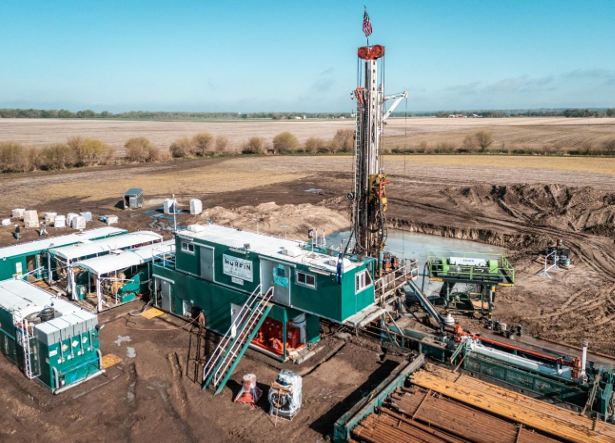In what could mark a significant development in the emerging field of geologic hydrogen, HyTerra Limited has reported preliminary findings from its first exploration well in Kansas indicating air-corrected hydrogen concentrations as high as 96.1%.
The Sue Duroche 3 well, part of a 12-month drilling program under HyTerra’s wholly owned subsidiary HYT Operating, is the company’s first active step toward evaluating the viability of natural, or “white,” hydrogen extraction at scale in the Midwestern United States.
The exploration campaign, backed by investment from Fortescue Future Industries Technologies Pty Ltd, began in April 2025 and targets deep Precambrian basement rocks, which some studies suggest may host hydrogen generated via natural water-rock interactions. While initial gas samples from Sue Duroche 3 have delivered unusually high hydrogen concentrations—validated by independent laboratory Isotech Laboratories Inc.—key uncertainties remain about flow rates, pressure, and ultimately the commercial recoverability of the gas.
Sue Duroche 3 was drilled to a depth of 3,453 ft (1,052 m), with approximately two-thirds of that interval penetrating Precambrian basement rock. According to the company, real-time mud gas logging showed repeated high hydrogen readings, later corroborated by fast-tracked surface gas samples that revealed concentrations exceeding 90% hydrogen after air correction. These results parallel historic readings from the nearby Sue Duroche 2 well (2009), which recorded concentrations up to 92%.
In addition to hydrogen, elevated helium levels were detected, hinting at ongoing subsurface degassing processes—an encouraging sign for those investigating non-biogenic hydrogen systems. Schlumberger conducted a comprehensive formation evaluation including wireline logging and rotary sidewall coring, which revealed indications of matrix porosity and dolomitization, both of which may suggest the presence of reservoir-quality rock.
Still, these results—though promising—are preliminary. There has been no flow test or extended well testing to determine hydrogen deliverability or pressure behavior, both critical factors in establishing a working resource. A re-entry into the Sue Duroche 3 well for downhole gas sampling and monitoring is planned, but without direct flow data, any assumptions about commercial viability remain speculative.
HyTerra’s program has benefited from its partnership with Fortescue Future Industries, whose own ambitions in global hydrogen markets could facilitate eventual offtake or scale-up strategies. The Nemaha Project is strategically positioned in the central U.S., potentially allowing for integration with regional freight, rail, or ammonia production systems, all of which are under increasing decarbonization pressure.
Further, the company has opted to work with Schlumberger for its logging and evaluation work, a choice that suggests intent to benchmark against best-practice exploration protocols. The early operational success—on time, on budget, with no reported HSE incidents—also strengthens HyTerra’s credibility as it prepares to spud its second well, Blythe 13-20, later this month.
However, the path forward hinges on a critical pivot from geochemical curiosity to engineering certainty. Until extended well tests are conducted and reservoir performance is better understood, HyTerra’s high hydrogen readings—while noteworthy—remain part of an unresolved exploration equation.
As the industry grapples with how to define, quantify, and commercialize natural hydrogen, HyTerra’s exploration in Kansas is shaping up as a key case study. The company’s decision to pursue re-entry for downhole sampling and gas monitoring shows a recognition that surface samples alone cannot support development decisions.
With nearly all remaining gas samples now headed to independent labs and a second well spudding imminently, the next few months will be critical in assessing whether Kansas’ white hydrogen potential can move beyond exceptional lab values and into the realm of sustained, measurable production.
Stay updated on the latest in energy! Follow us on LinkedIn, Facebook, and X for real-time news and insights. Don’t miss out on exclusive interviews and webinars—subscribe to our YouTube channel today! Join our community and be part of the conversation shaping the future of energy.
